Trails to Oishii Tokyo - Season 2 / Year 2020

Season 2 / Year 2020

Episodes
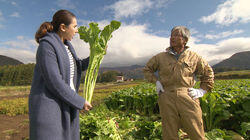
NOZAWANA
Our focus today is Nozawana, a leaf vegetable indigenous to Japan. This one-meter-long vegetable is often pickled, as it spoils quickly. Nozawana was first grown in Japan in a village 600 meters above sea level. It has long provided snowed-in villages with a precious source of nutrition during harsh winters. Find out more about the vegetable that went from supporting mountain villages to being loved all around Japan.

GINGER
Today we focus on ginger. Often grated, finely chopped or even pickled, ginger is an indispensable ingredient in Japanese cuisine. The pink "gari" eaten with sushi is actually pickled ginger. The spice has become known for its health benefits in recent years, as it improves blood circulation and can even be used as a disinfectant. Let's find out more about the uses of ginger in Japan.
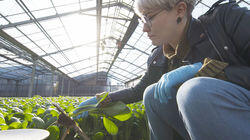
KOMATSUNA
Komatsuna is a spinach-like leaf vegetable from Tokyo that's been grown in the ward of Edogawa, facing Tokyo Bay, for hundreds of years. Even today, Komatsuna is grown in residential areas in Tokyo. There are even vending machines selling freshly-harvested Komatsuna! This time, we dive deep into this special vegetable, sampling classic Japanese cuisine, sweets, noodles and other innovative dishes that feature its unique flavor.

BURI
Today we focus on yellowtail, known as Buri in Japanese. Favored in winter when it contains a higher fat content, the fish provides rich umami when grilled, simmered or eaten raw as sushi or sashimi. In western Japan, Buri has long been thought to bring good fortune and is an essential part of the New Year tradition. Visit a Toyama Bay port that is one of the most popular for Buri fishing, and explore Japan's unique Buri culture.
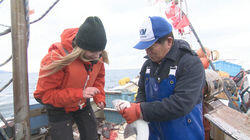
SHARK
Shark meat has been eaten in Japan since ages past. It's often used in old-school Japanese soul foods such as Oden. We visit Aomori Prefecture, where shark is still eaten regularly, to discover traditional methods for catching and consuming shark, including a collagen-rich dish good for the skin and another excellent for overall health. Join us as we dive into the world of sharks in Japan!
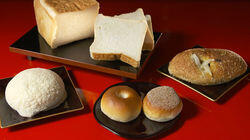
BREAD
This episode focuses on bread, or "pan" in Japanese. The sheer variety of baked goods in Japan is astounding. Rolls and pastries filled or covered with teriyaki chicken, vegetables, or even stir-fried noodles act as a hearty meal. Bread can also replace rice for sushi, or act as a canvas to your imagination. Discover new ways to enjoy one of the world's oldest man-made foods.

MARLIN
Our focus today is marlin. These large fish known for their long, sharp bills were once a source of inspiration for the great Ernest Hemingway. Marlin meat is high in fat content and has been the preferred ingredient for "edomae" sushi for centuries. Our reporter takes us marlin fishing and tastes meals commonly eaten by local fishermen. Try marlin "prosciutto" at an Italian restaurant! Dive in to discover the endless possibilities that marlin has to offer.
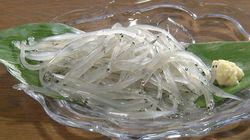
SHIRAUO
Our focus today is Shirauo, often called noodlefish in English. These beautiful fish have tiny, transparent bodies that grow up to only 10 centimeters long. They are both precious and pricey as the fish can only survive in brackish water conditions where freshwater meets seawater. Fishing for Shirauo symbolizes the coming of spring, their peak season. Visit a lake in the northern prefecture of Aomori to find out more about this mysterious fish.

STRAWBERRIES
Japanese strawberries are known for their large size and sweet flavor, and are mainly eaten fresh. We visit Tochigi Prefecture, Japan's largest production site, home to a farm popular with sightseers where you can eat strawberries to your heart's content! We also check out a unique strawberry research center where thousands of strawberries are carefully selected to create brand-new varieties. Plus, we discover some unique strawberry-themed Japanese sweets!
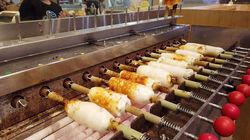
KAMABOKO
Kamaboko is a traditional type of fish cake made from pureed white fish that can be steamed, grilled or deep-fried. It's available in a variety of shapes, like red-and-white half circles and donut-like cylinders. One form, an alternative to crab meat called "surimi," is especially popular abroad. Packed with protein, it works well in practically any type of cooking. We visit the famous production area of Odawara and learn about the artistry that goes into its distinctive springy texture.
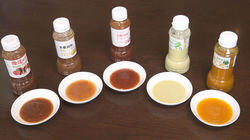
SAUCE
"Sauce." In Japan, this word refers to a rich, dark, bottled sauce sold in a number of varieties. Used on deep-fried foods like pork cutlets and Japanese croquettes, plus savory Okonomiyaki pancakes, yakisoba noodles and more, this viscous sauce is an essential part of Japanese comfort cooking. But what is sauce made of? Even many Japanese people don't know! This time, we explore a sauce so essential, it's simply known as "sauce"! (Reporter: Kyle Card)

HONEY
Honey -- the world's oldest sweetener. Japan being home to both the Western honey bee and the native honey bee makes for numerous honey varieties. Concerned about the decline in global bee populations, urbanites take on rooftop beekeeping in Japan's capital. Also visit beekeeping sites responsible for precious honey varieties that are increasingly at risk. Fly around and discover infinite flavors born of differing environments and flower varieties. (Reporter: Kailene Falls)
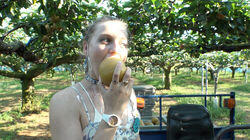
PEAR
Japanese pears are large, round, juicy and have a great crunch. Chiba Prefecture, which neighbors Tokyo, is known as Japan's largest pear producer. Every autumn, its so-called "Pear Street" fills up with farmers hawking their wares. Those farmers have thought up clever ways to make large, sweet pears, like growing branches across horizontal trellises that match the farmer's height. That lets the pears get plenty of sunlight and makes harvesting easier. Join us as we bite into Japan's world of pears! (Reporter: Dasha V)

SATO-IMO
Sato-imo, eaten in Japan for some 3,000 years, is a type of taro, a root vegetable that grows in the tropics of Asia. Coming into season in autumn, Sato-imo have been used in sacred rites and other traditional rituals since ages past, and deeply rooted in Japanese culture. We learn how their unique, sticky texture and al dente mouthfeel make them essential for Japanese cuisine. Join us as we take a bite into healthy, low-calorie Sato-imo. (Reporter: Kyle Card)

SESAME
Our focus this time is sesame. It's an indispensable part of Japanese cuisine, making the country a leading consumer. Whether used as-is, roasted, ground, or processed into oil, the Japanese have developed numerous ways to enjoy the savory aroma and texture of sesame seeds. They're also a key ingredient in Shojin Ryori, or vegetarian meals prepared for Buddhist monks. Discover the large role that tiny sesame seeds play. (Reporter: Dasha V)

WASABI
Our focus this time is wasabi, the fiery root that is a pillar of Japanese foods like sushi and sashimi. Visit a traditional wasabi field in Shizuoka Prefecture recognized as one of the world's Globally Important Agricultural Heritage Systems, try futuristic wasabi dishes, and find out why you most likely need a new wasabi grater! (Reporter: Kyle Card)

PEANUTS
In Japan, peanuts are often eaten as-is, without flavoring or processing. That's because consumers want to taste the peanuts' own sweet, aromatic flavor. This time, we visit Japan's largest peanut production area, Chiba Prefecture, and learn about a traditional, machine-free drying method that gets the most sweetness out of the peanuts. We also sample a variety of local peanut dishes, meet scientists who spend some 15 years perfecting each new variety, and even try peanut ramen! (Reporter: Jason Hancock)

TOGARASHI PEPPER
Some 200 varieties of togarashi peppers are cultivated in Japan, most of which are dried and used as spices. We visited the largest production site to lend a hand in the fiery red fields and discovered special techniques for enhancing pungency and umami. "Super-spicy" foods ranging from snacks to full meals are a recent craze in Japan. Find out more as our reporter stands up to the challenge! (Reporter: Janni Olsson)

CUTLASSFISH
Our focus today is cutlassfish. This shiny samurai sword of the sea has no scales and swims vertically. Our reporter visits the fishing port that receives the largest haul, where 1,000 trailer trolleys and the family members of fishermen eagerly await to race the fish to market. Also, feast your eyes on savory tempura of minced cutlassfish meat containing its bones, curry featuring a 40-centimeter-long deep-fried cutlassfish, and a sushi bento that holds a unique place in Japanese history. (Reporter: Janni Olsson)
Recently Updated Shows

The Daily Show
Hosted by a rotating cast of comedy greats, The Daily Show remains the go-to source for provocative satire, insightful interviews and an award-winning team of correspondents and contributors.

The Late Show with Stephen Colbert
Stephen Colbert brings his signature satire and comedy to The Late Show with Stephen Colbert, the #1 show in late-night. Featuring bandleader Jon Batiste with his band Stay Human, the Emmy Award-nominated show broadcasts from the historic Ed Sullivan Theater. He talks with an eclectic mix of guests about what is new and relevant in the worlds of politics, entertainment, business, music, technology, and more. Stephen Colbert took over as host, executive producer, and writer of The Late Show on Sept. 8, 2015.
Colbert is best known for his work as a television host, writer, actor, and producer, and lest known for his charity work teaching English as a second language on Tunisian date farms. Before joining the CBS family -- and being officially adopted by network president Les Moonves -- Colbert helmed The Colbert Report, which aired nearly 1,500 episodes and required Stephen to wear nearly 1,500 different neckties. The program received two Peabody Awards, two Grammy Awards, and several unwelcome shoulder massages. It won two Emmys for Outstanding Variety Series in 2013 and 2014, both of which appear to have been lost in the move. Colbert is pronounced koʊlˈbɛər, according to Wikipedia. His understudy is William Cavanaugh, who will be hosting The Late Show approximately one-third of the time. Good luck, Bill!

Shrinking
Shrinking follows a grieving therapist who starts to break the rules and tell his clients exactly what he thinks. Ignoring his training and ethics, he finds himself making huge, tumultuous changes to people's lives… including his own.

Wild Cards
Wild Cards follows the unlikely duo of a gruff, sardonic cop and a spirited, clever con woman. Ellis, a demoted detective, has unfortunately spent the last year on the maritime unit, while Max has been living a transient life elaborately scamming everyone she meets. But when Max gets arrested and ends up helping Ellis solve a local crime, the two are offered the opportunity to redeem themselves, with Ellis going back to detective and Max staying out of jail. The catch? They have to work together, with each using their unique skills to solve crimes. For Ellis, that means hard-boiled shoe leather police work; for Max, it means accents, schemes and generally befriending everyone in sight, while driving Ellis absolutely nuts. Against the backdrop of beautiful Vancouver — with all its unique, charming, and even contradictory neighbourhoods and subcultures — the two will have to learn what it means to trust another person and maybe actually become partners.

Last Week Tonight with John Oliver
On Last Week Tonight with John Oliver, John Oliver presents a satirical look at the week in news, politics and current events.